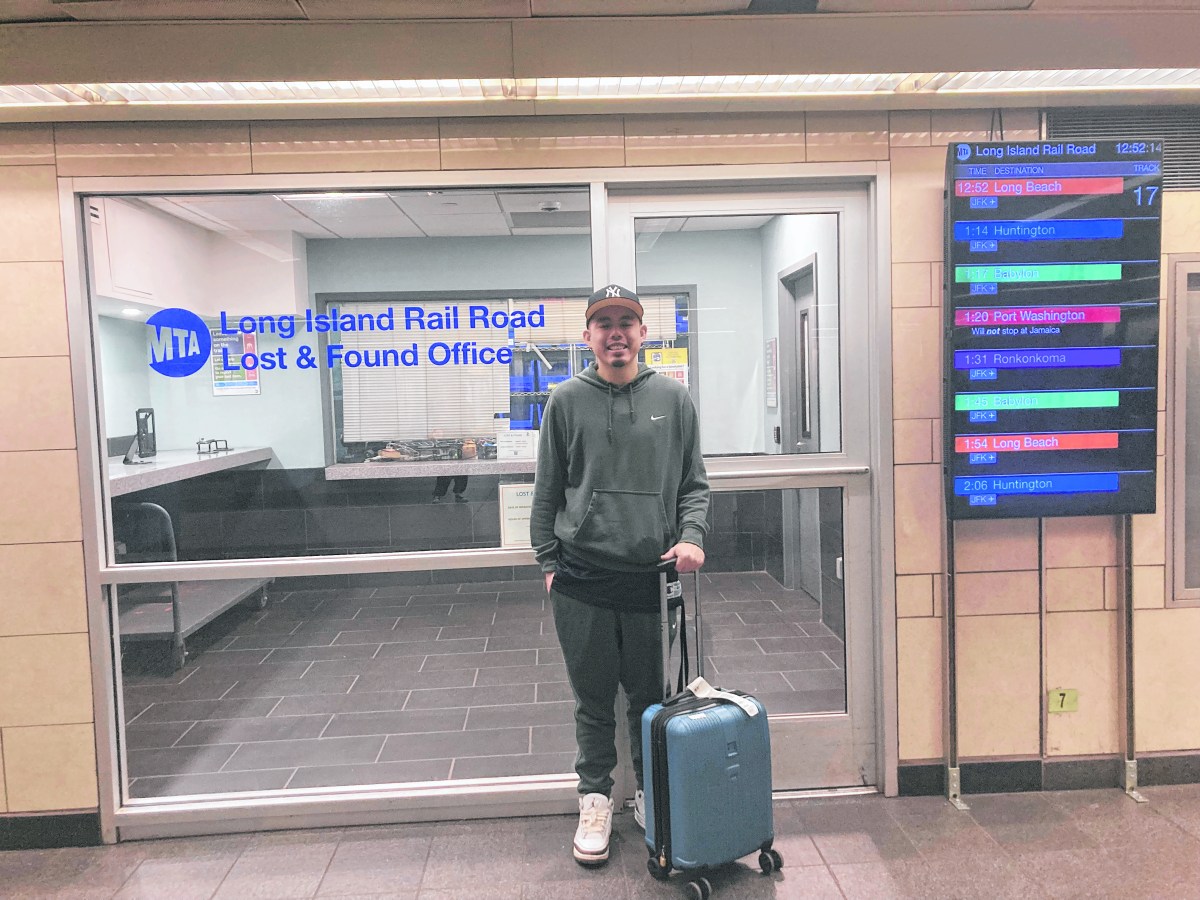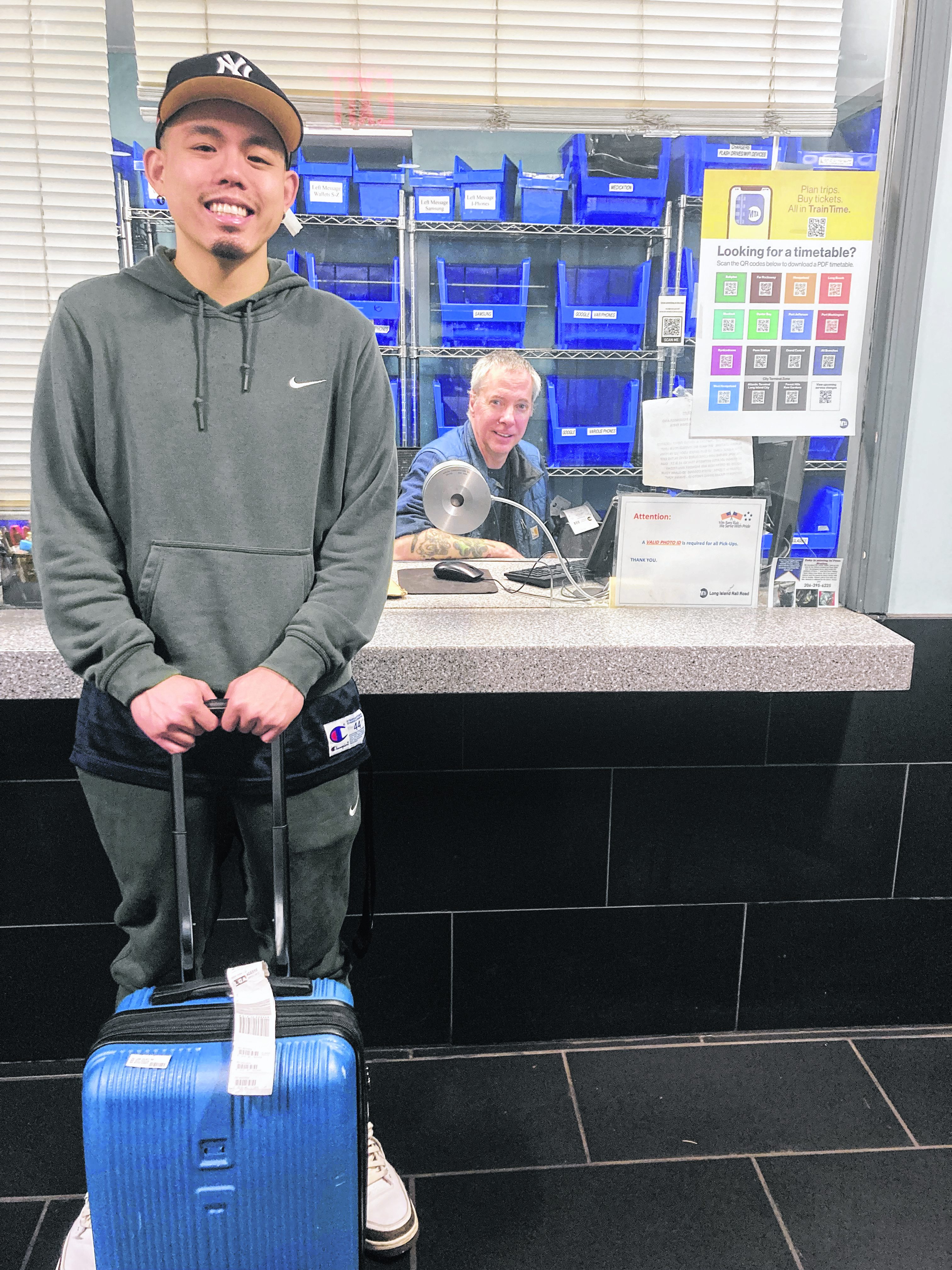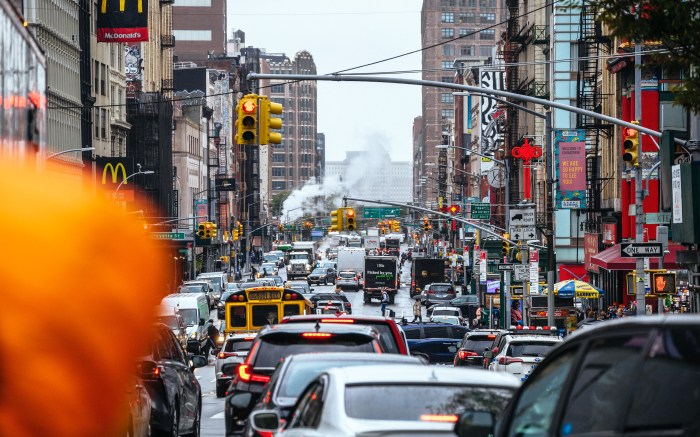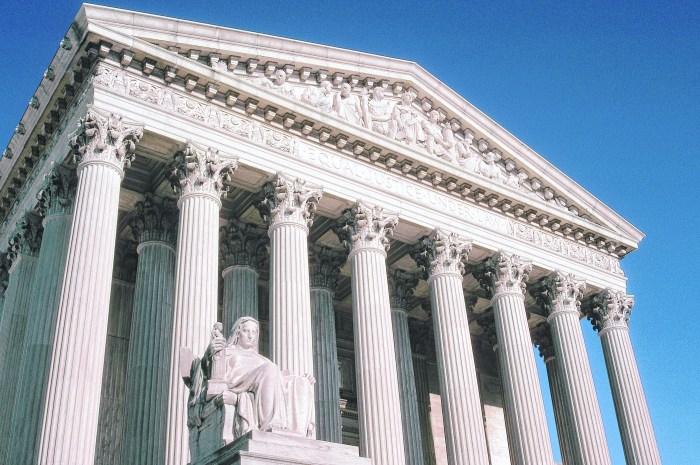It was a typical day at the Long Island Rail Road Lost and Found Facility tucked in a corridor between Track 16 and 17 at Penn Station, filled with thousands of objects. Everything from a prosthetic leg (it was lost while being delivered) to umbrella after umbrella, phones, wallets and suitcases finds a last (or not-so-final) resting place here.
But for Jolanda Allen and Tejan Casey, who had lost items, it was a union with a happy ending. After losing her purse on a train, Jolanda Allen received a letter from the railroad’s Lost and Found thanks to an address on her identification card. And Casey arrived soon after, part of a long line of people arriving in search of hope, to solve the mystery of a missing suitcase he had left on a train while visiting his aunt in Rockville Centre.
“We were getting on a train in a rush at Jamaica station,” Allen, 28, of Brooklyn, said, after Anthony Heuskin, 54, of Selden, a LIRR Lost and Found supervisor, handed back her lost bag. “Everything is still there. I’m just grateful. And it was right before Christmas. This is Christmas gift one.”
Soon after that, Casey described his suitcase before Heuskin went back to search. A few seconds later, after seeing Casey’s name on a sticker on the suitcase, Heuskin returned it.
“I was going to my aunt and I got off my train without the suitcase,” Casey said. “I was off today. I decided to go over here.”
Lost and found facilities have long been limbos for the left behind items, but thanks to software and the internet, more items are not only being reported lost, but found. While nobody likes losing something, companies these days, from concert venues to cafes and transit hubs, more than ever are getting to reunite people with items that, years ago, would have been lost forever.
“It’s like this when you give something back,” Heuskin said, after returning the two objects. “But when you don’t give something back, sometimes it’s the total opposite.”
By the numbers
America may be the land millions go to find opportunity, but it’s also full of lost items littering the landscape and filling large lost and founds (the LIRR has a main lost and found, with another space for additional items) and small ones, such as baskets at libraries.
“Technology tends to distract you,” said Henry Felton Jr., a Long Island Rail Road Lost and Found supervisor, regarding the epidemic of misplaced items. “The common story is, ‘I was on my phone. I looked up, it was my stop, and I got up.’”
More than 400 million items are lost and found in the United States annually, according to Lostings.com, an online lost and found inventory management software. That is more than a million items a day: Think about that the next time you misplace an object.
Wallets, keys and phones are among the more valuable items, while more than 10 million Americans lose their cell phones annually. At least 70% of lost cell phones are returned to owners, according to Lostings, which says the estimated value of items lost in the United States is more than $5 billion annually.
“We have a new database that helps us out,” Felton said of how technology lets them better track, and return, items. “Our inquiry system is better than it used to be.”
The holiday season is the busiest time not only for stores, but lost and found facilities with a 25% increase compared to other times, according to Lostings. “Right before the holidays. They’re in a rush getting on and off trains,” John Persico, another LIRR Lost and Found supervisor, added. “Things get left behind.”
The holidays also bring lost gifts to the Long Island Rail Road Lost and Found. “We got stuffed bear, penguins, a little (toy) lawn mower,” Felton said. “December is when we get most of our toys. Christmas gifts.”
Lost in transit
Travelers are among the biggest losers when it comes to objects. The Transportation Security Administration estimates that 90,000 to 100,000 items are lost at checkpoints monthly. If you think luggage is all that’s lost at airports, you are missing the big (or little) picture. Lostings indicates that more than 2 million items are lost at airports annually with about 70% returned. JFK Airport has the largest lost and found department in the world with over 30,000 items reported every month, according to Lostings.
When passengers exit an Uber, they often leave behind a lot more than a tip. According to Uber’s 2023 Lost & Found Index, clothing, phones, keys and wallets are the most commonly reported lost items.
“As always, riders have been leaving their unique and sometimes quite unusual items behind,” according to the company, citing a vibrator, 40 pairs of dentures, 70 Nintendo switches, fake blood, and a fog machine “We saw a significant spike in lost Disney and Harry Potter items.”
The LIRR Lost and Found in October recovered 1,115 items, returning 560 after about the same number were lost in September and 527 were returned, Felton said. That’s roughly a 50% batting average, good in baseball and lost and found departments.
“Generally about 1,000 to 1,100 items are lost per month on average,” Felton said, noting the return rate has nearly doubled from 29% since he started in 2008. “We return around 500 items a month.”
Heartbreak hotel
Travel takes its toll a second way: Hotels receive an average of 100 lost items monthly, led by clothing, chargers, and toiletries, according to Lostings. “They’re in a hurry to get out,” said Denean Lane, general manager of the Holiday Inn Express, a 143-guest-room hotel in Stony Brook. “They don’t realize they left certain items.”
Except for handicapped rooms, rooms often have closed bed frames, so guests can’t leave items beneath beds. They leave items on nightstands, in bathrooms, closets and drawers, which cleaning staff recovers.
“Our housekeepers have turned in so many valuables, from watches to electronics, jewelry and cash from wedding gifts,” Lane said, noting that honesty isn’t just the best policy, it’s the professional practice that is expected. “Credit cards are turned into us all the time.”
Cleaning staff give items to the executive housekeeper, who logs them. They call owners, easily identified for items in rooms, who pick them up or have them FedExed. “Sometimes, it’s left in the parking lot,” Lane said of items that are tougher to track. “A guest will bring it in.”
Guests sometimes quickly realize that phones and some other items were lost. “They come back and say they think they lost something in the room,” Lane said. “We give them a key card, so they can go back in.”
Children lose tablets, and teddy bears and other stuffed animals are left behind, including one left in a bed waiting to be made. “We found it in the laundry room,” Lane said of a teddy bear returned to its family. “I brought it to the guest room.”
Eat, drink and be wary
Customers leave behind a huge menu of items at bars and restaurants: Sometimes they are fueled by alcohol, and often by lack of attention. Neil Goldberg, 50, of Woodbury, owner of the Main Street Board Game Café in Huntington, said people often call, unsure of where they left items.
“We get more calls than we have items in the lost and found pile,” he said. “They had dinner, went to our place, maybe a bar, get home and realize something’s gone.”
Students at afterschool programs, grades 4 to 12, sometimes leave behind items, including Dungeons & Dragons Player’s Handbooks with their name. Card players occasionally leave behind valuable cards.
“Someone left a Magic: The Gathering deck,” Goldberg said. “They came back the next day. There were probably $500 worth of cards.”
People prove lost cards are theirs by identifying them. “And if we have it, we can give it to them the next day,” Goldberg said.
Lost in Concerts
It’s extremely easy to leave something behind at a crowded, fairly dark, concert. Since opening in November 2021, UBS Arena in Elmont has welcomed over 2 million guests, logging more than 2,500 found items. They typically log 15-20 per event, including debit and credit cards, IDs, wallets, phones, shirts, sweatshirts, jackets, hats and five to 10 umbrellas on rainy days, according to Guest Experience Manager Evan Mattioli.
“We get a bunch of jackets every event, especially during the winter,” he added. “Mostly, people don’t claim jackets.”
They had 201 lost items from events in the past 30 days and have found some valuable items since opening. “We recovered a piece of jewelry worth $2,000 that we were able to return to the guest,” Mattioli added.
After an Oct. 7 Chris Stapleton concert, a security guard turned in a Cartier ring found in the women’s restrooms. “She provided every detail possible,” he said of the guest. “She gave me information on the bathroom where it was found, the color of the ring and what it was.”
The woman’s mother picked up the ring. “She was super thankful,” Mattioli added. Valuable items often are returned, which may be a hopeful sign for human nature.
Many local residents lose items at the UCB Arena, but some items are shipped worldwide. “A girl lost her handbag at a concert by TXT, a K-pop show, in May,” Mattioli said. “We shipped it back to Tokyo.”
Lost at the library
Libraries, with users ranging from the very young to the elderly, find more than books left behind. And children often are the culprits, or the victims of forgetting, although older patrons may be more prone to overlook, in general.
James Olney, 54, director of the Northport-East Northport Public Library, said visitors lose umbrellas, overcoats and other items.
“People sometimes leave things on the copy machine,” he said of licenses, tax documents and other items. “They leave the original on the machine.”
Children leave dolls, toy cars and other small items they bring from home to programs. The library sometimes find owners, but couldn’t when a child left a toy golf club and baseball bat on a bench.
“One of the staff put them in our umbrella rack,” Olney said. “Hopefully, the owner will spot it.”
Long lost
Different places hold items for different timeframes. UBS Arena holds them for 30 days, before donating unclaimed phones to Big Sky Recycling and shredding unclaimed debit cards and credit cards.
The LIRR holds items worth up to $100 for 3 months, $101 to $500 6 months and up to $5,000 a year. “Anything above that, we hold for three years,” Felton said.
Olney said his library holds items up to 6 months, typically giving cell phones to police. “We hold onto those a few days, hoping they’ll remember where it was last used,” Olney said.
The Holiday In Express in Stony Brook keeps items for 60 days and then donates them to a local shelter. And even if not all items lead to reunions, they all have a past.
“Every item that comes through here has a story,” Persico said of the LIRR. “It’s always nice to reunite somebody with their stuff.”
Felton said that most missing items are misplaced not misappropriated, landing, with a little luck, in lost and founds. Thanks to software, with some help from human nature, and the ability to report missing items on cell phones, items are often not lost forever.
“A lot of people assume something missing is stolen,” Persico said. “They’re often wrong. Most people are good. They return things.”





























